Most of us have been there. After the festivities of the holiday season pass, the memories may still fill us with warmth, but the delectable dishes have faded from our taste buds, only for our waist lines to remind us of all the celebrating we did. Others may wince thinking about the realities of balancing a budget after some overzealous spending, albeit with holiday cheer. Some of us immediately get back on the wagon, while others prefer to use the new year as a springboard to get back on the right track. (To those of you who are perfect year round, congratulations, we envy your discipline.)
Whether it's losing a few pounds, saving money, or something else, Americans love to make New Year’s resolutions. In fact, it's a tradition that can be traced all the way back to the days of ancient Babylonia. There’s something inspiring about starting fresh with the new year, after all, it's a chapter yet to be written, a clean slate.
But what really happens after a New Year’s resolution is made? We surveyed over 2,000 Americans to find out. What are the top resolutions, and how long do people usually stick to them? And which resolutions are the hardest to keep? Here’s what we learned.
Promising to Live a Better Life
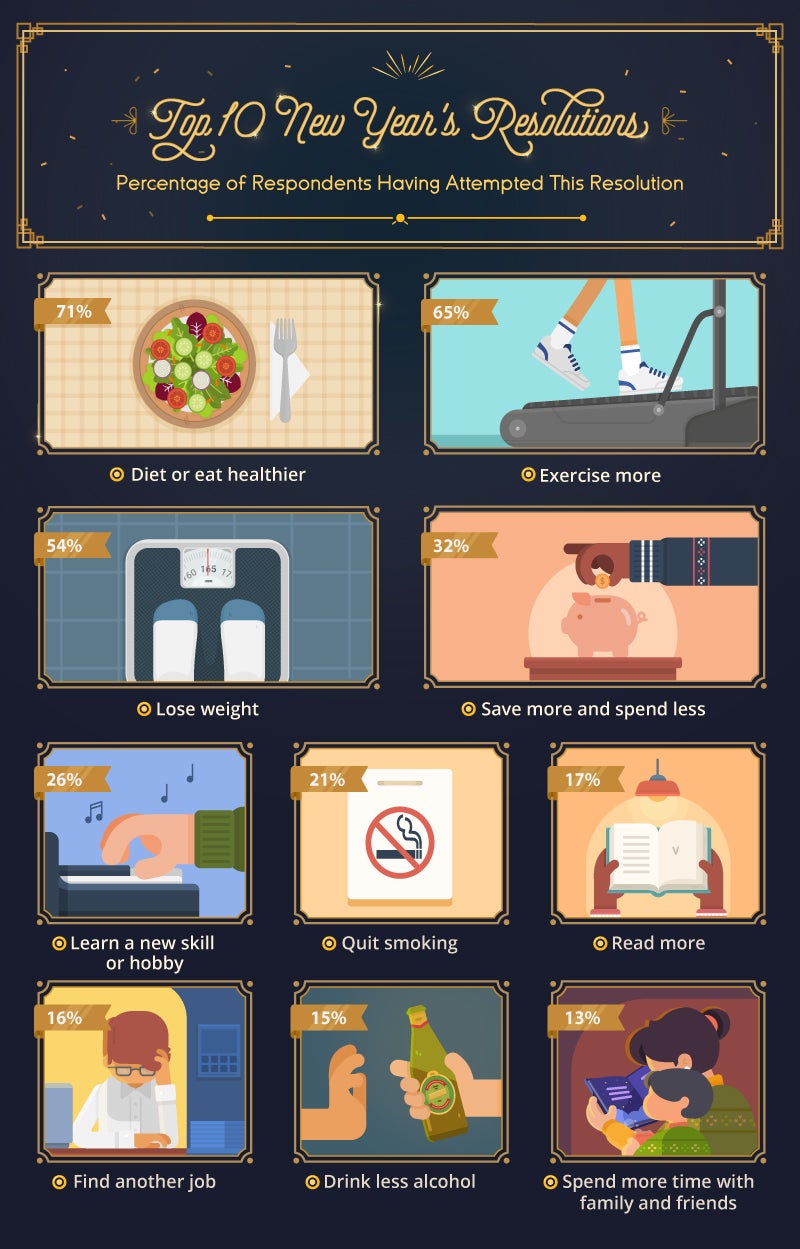
In fact, 65 percent of participants made a New Year’s resolution to exercise more. Based on the latest data from the CDC, only about 1 in 5 adults meet the 2008 Physical Activity Guidelines. Americans resolving to exercise more will receive many benefits from increased physical activity, such as weight control, muscle strengthening, and improved mood.
Other top commitments were focused on self-development. Saving money, learning new skills, and reading more were popular New Year’s resolutions.
Men’s and Women’s Top Resolutions
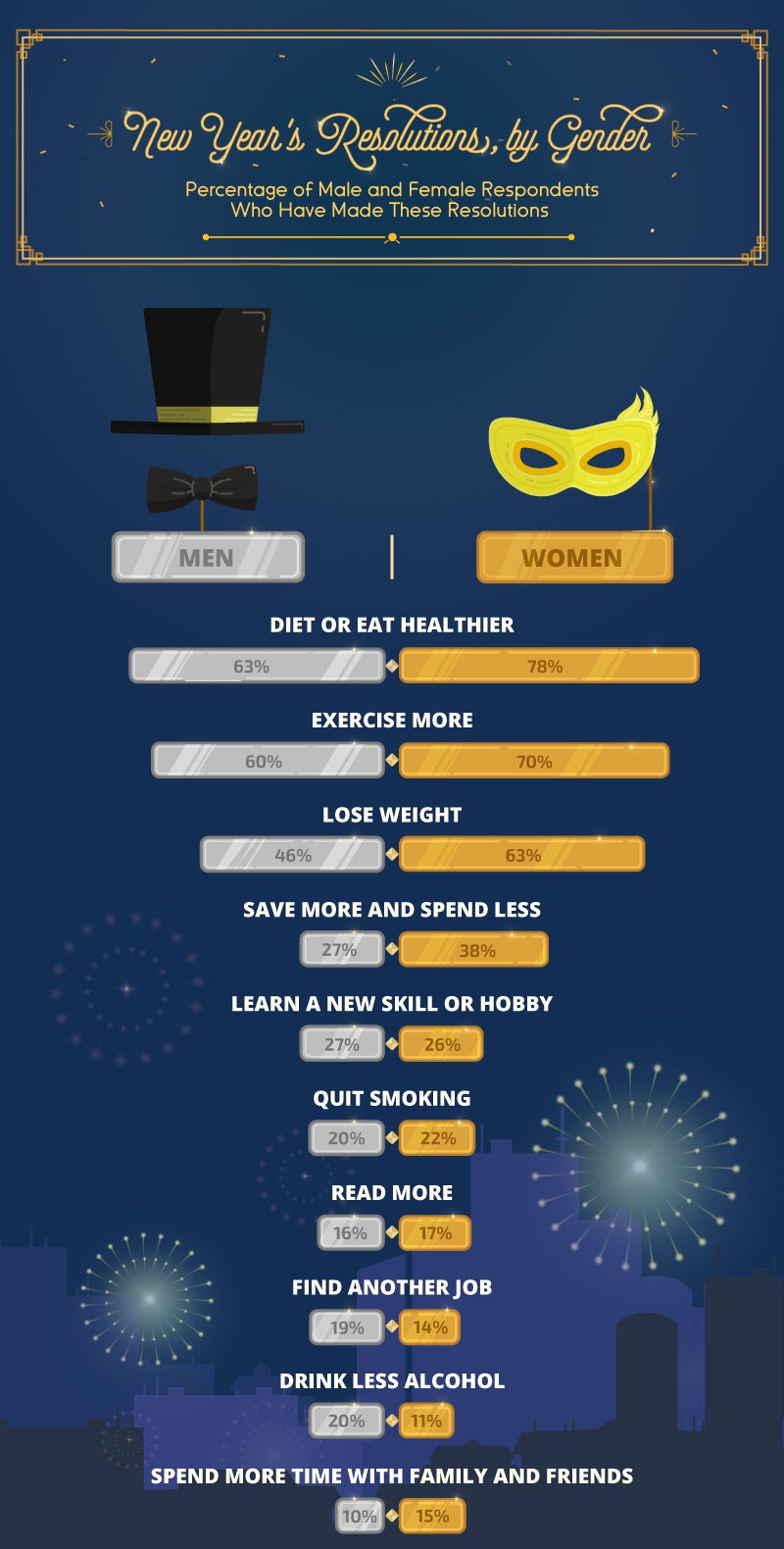
When we looked at top New Year’s resolutions by gender, we found that women were more likely than men to make resolutions related to health and wellness, such as eating healthier and quitting smoking.
However, men were more likely to pledge to find another job and drink less alcohol. According to a 2015 study by the CDC, men were more likely than women to have had at least one day of heavy drinking in the previous year.
Generational New Year’s Resolutions
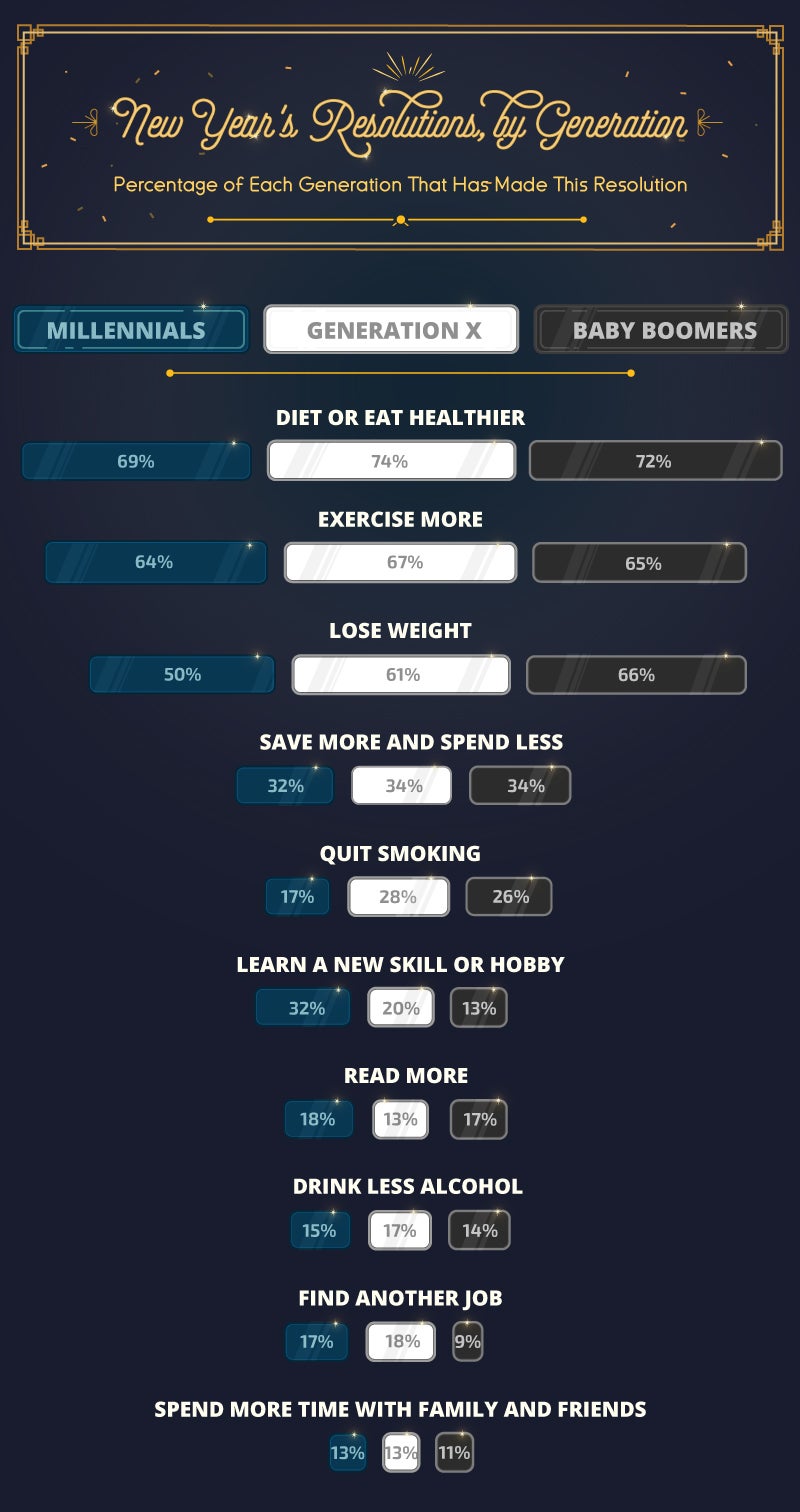
As it turns out, dieting or eating healthier is popular across generations, with the majority of all three generations having made this resolution. It’s also worth noting that Millennials were the most likely to try and learn a new skill.
While Millennials have passed Baby Boomers as America’s largest generation, it is actually the middle child, the Generation Xers who were the most likely to resolve to find another job and to save more money and spend less of it.
The only commitment baby boomers were more likely to pledge, however, was to lose weight. Additionally, 72 percent of baby boomers resolved to eat healthier, while 65 percent planned to exercise more.
Failing to Commit to New Year’s Resolutions
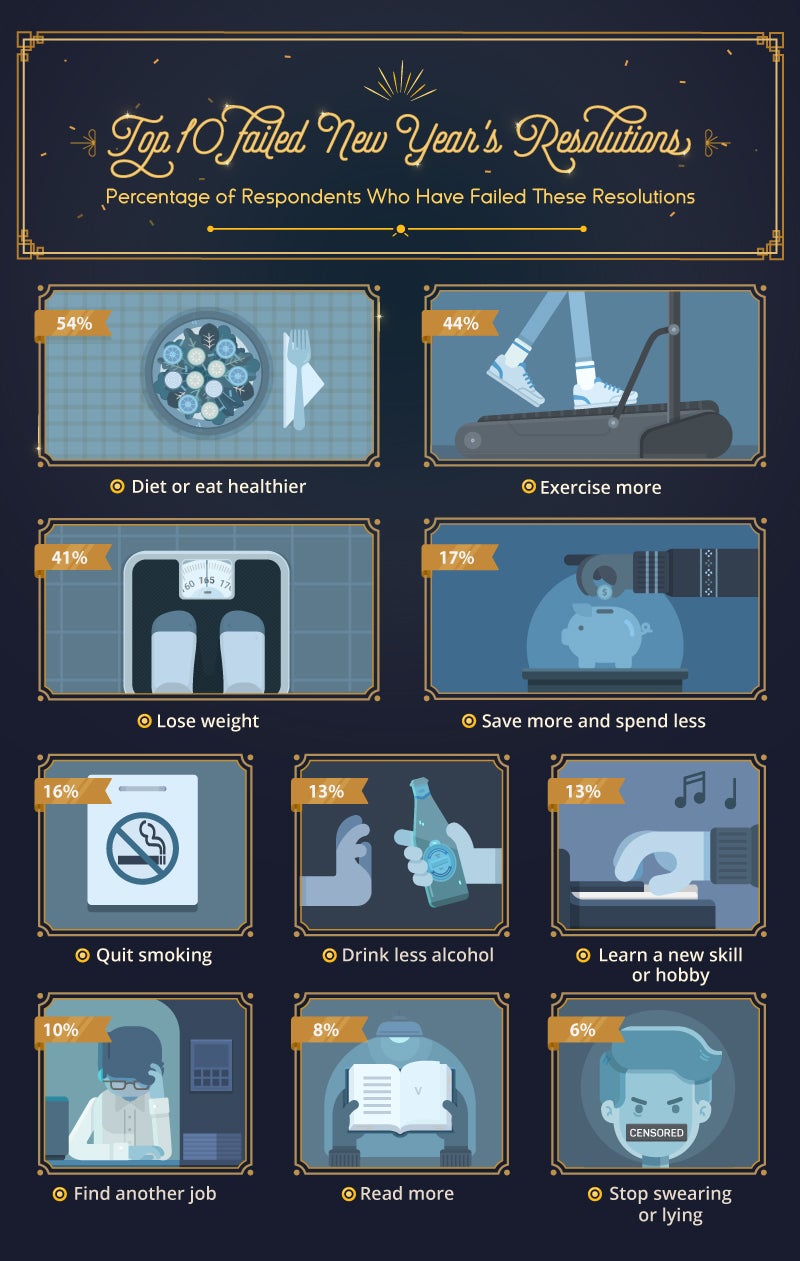
A whopping nine of the top 10 most commonly failed New Year’s resolutions also happen to be in the top 10 most popular resolutions. A new item that appears on the list is the pledge to stop swearing or lying, with 6 percent of survey respondents having tried and failed.
We found it noteworthy that the top three most failed resolutions were also respondents’ top three New Year’s commitments. Unfortunately, 54 percent of participants who pledged to eat healthier failed, while 44 percent were unable to stick with an exercise routine. Further, 41 percent were unable to lose weight.
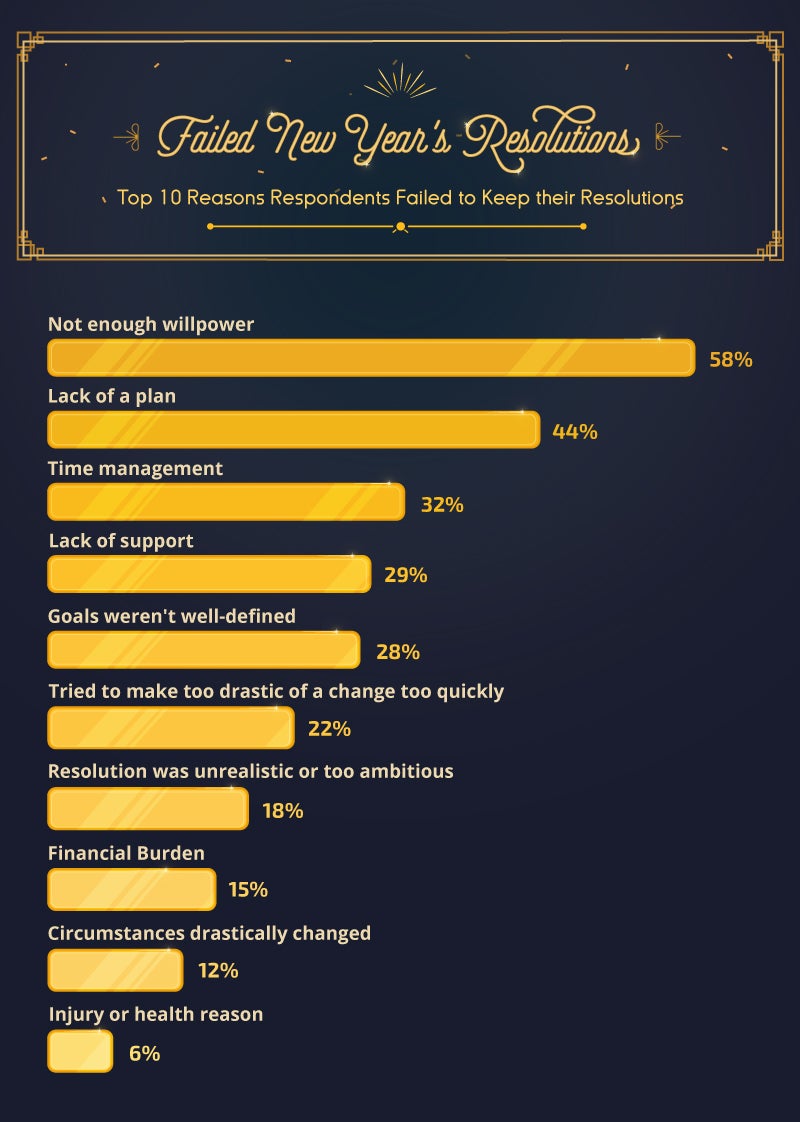
The most commonly cited reasons for failing to keep New Year’s resolutions were a lack of sufficient willpower and not having a plan. Without these elements in place, resolutions can quickly fizzle out – or never even begin.
Fortunately, there are many free resources available to those who wish to bolster their willpower. For example, the American Psychological Association recommends various strategies for strengthening self-control, such as avoiding temptation and having a plan in place. Other tools to increase willpower and self-control include guided meditation and breathing exercises.
A Regional Lack of Willpower

When we take a deeper look into the geographical breakdown of Americans who failed a New Year’s resolution because of a lack of willpower, we found the highest percentage happened to live in the Midwest.
Typically, cold weather makes people want to stay indoors, and studies have shown that Americans report exercising less in winter. Considering that so many Americans across the country cite lack of willpower as their reason for failing New Year’s resolutions, the fact that these commitments begin in the winter might have something to do with these high rates.
How Long Do Most American Resolutions Last?
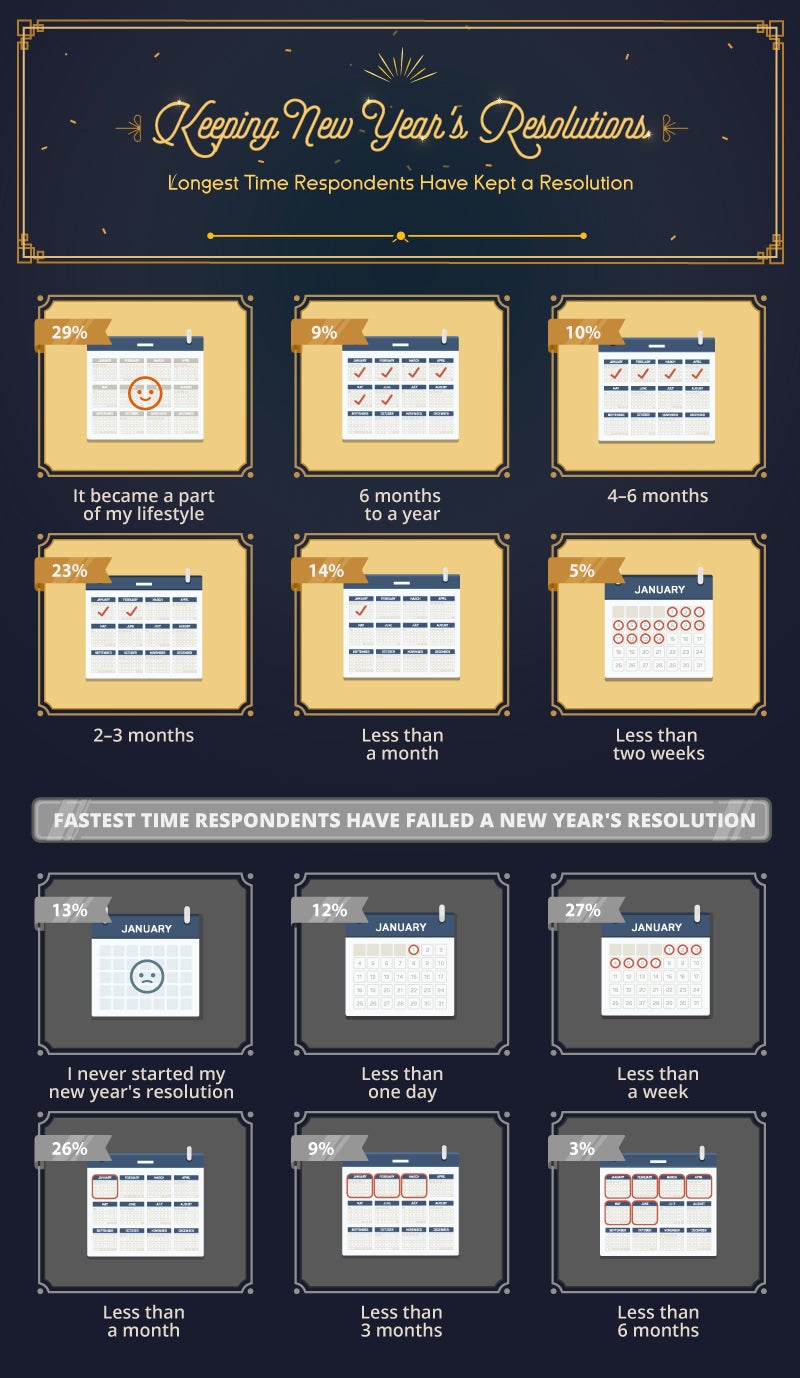
Have you ever made a New Year’s resolution that you didn’t keep at all? Thirteen percent of respondents reported never even starting their New Year’s resolution, and over half of Americans failed their resolution while still in the month of January! While many people start out with the best intentions to get into better shape by joining a gym, 67 percent of people with gym memberships never actually use them.
However, nearly 1 in 3 Americans surveyed adopted a New Year’s resolution as part of their lifestyle. In contrast, 23 percent of survey respondents said the longest they’ve kept a New Year’s resolution is two to three months.
To make sure you’re one of the more successful resolution-makers, we recommend thinking ahead and making a plan to stick with it. Specifically, Dr. Paul Marciano recommends clearly defining your goals, tracking your progress, and having patience with yourself. At the same time, the American Psychological Association suggests starting small and focusing on changing one behavior at a time to avoid becoming overwhelmed.
New Hope for the New Year
While many Americans abandon their hope-filled New Year’s resolutions by February or March, setting goals for the new year remains a beloved pastime. Our survey found that 95 percent of respondents have made a New Year’s resolution, and 44 percent said their past successes and failures do not impact their decision on whether to make a resolution this year. Will you make a resolution for the new year? Perhaps it’s time to jump on one of your favorite ellipticals.
Methodology
We surveyed over 2,000 Americans asking them about their New Year’s resolutions.
Fair Use Statement
Help kickstart your new year by sharing our research. All we ask is that you link back to this page, so that the authors get proper credit. This page is intended to be shared for noncommercial purposes only.
What was your last New Year’s resolution? According to our survey, respondents’ top resolutions were to diet or eat healthier, exercise more, and lose weight. With over 36 percent of U.S. adults classified as obese, Americans may be determined to change this statistic.

